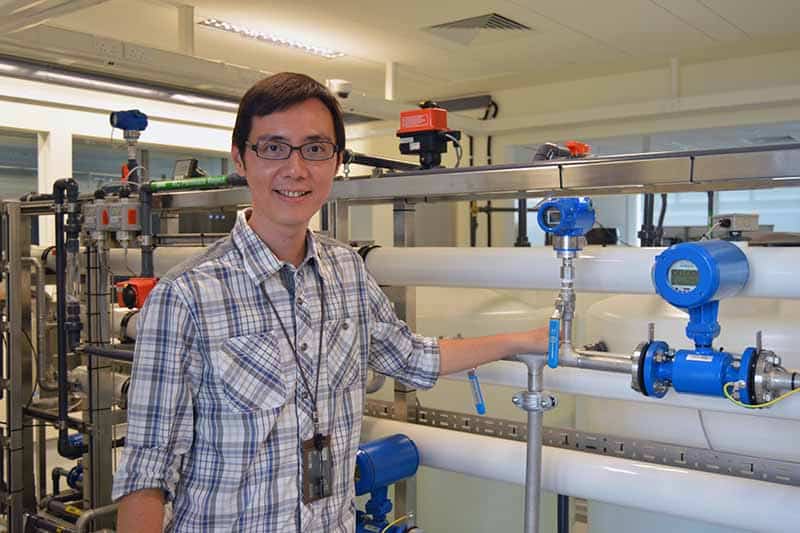
Through recognising the complex nature of today’s IT infrastructure systems and cyber security threats and risks, iTrust was established in February 2013 as a research centre at the Singapore University of Technology Design (SUTD).
iTrust focuses on applied research in cyber security. To achieve this, iTrust has three focus areas: Cyber Physical System (CPS); Enterprise Networking/Security; and the Internet of Things (IoT).
“Each of these areas is unique on its own and yet inextricably linked to the others. This is where SUTD’s multidisciplinary approach is most evident; our researchers hail from varying disciplines so that the research questions are viewed and approached from many different angles,” said Prof Aditya Mathur, Head of Pillar, Information Systems Technology and Design, SUTD and Centre Director of iTrust@SUTD.
Over 50 student and faculty researchers, with varying levels of research components and skills, operate within the three focus areas. iTrust researchers put out several research publications each year on their respective foci.
To ensure that the research outcomes and results are relevant and applicable to the needs of the real world, iTrust works closely and consults with the government, industry and academia to exchange ideas and validate its research.
At the moment, they work closely with the Ministry of Defence, Cyber Security Agency, PUB, and other government agencies.
They are invited to project progress meetings and conferences where best practices and solutions are shared with one another and collaboration on common problems are conducted.
“As cyber attacks are dynamic in nature, machine learning becomes an important tool to decipher and discern between false alarms and real threats, especially in large physical systems where so much data passes through and is processed each day,” said Prof Mathur.
“As is often said, a defence is only as strong as its weakest link, and much depends on the operator of a physical system or the user of a small IoT device to take the necessary cautions to prevent and/or detect cyber attacks.”
In this same vein, and also contributing to Singapore’s Smart Nation initiative, iTrust continues to reach out to and educate students, in order to raise cyber security awareness among them.
OpenGov recently visited the iTrust testbed -the Secure Water Treatment (SWaT)- at SUTD and was given an exclusive tour by Mr. Ivan Lee, Senior Associate Director, Cyber Security Technologies, iTrust.

He walked us through the SWaT testbed, which consists of six phases:
- Raw Water Storage: Mimics reservoir storage prior to treatment
- Chemical Dosing: Water disinfection as well as balancing pH. This is where hackers may manipulate the system and change the speed and time of dosing, or switch it off completely.
- Ultra-Filtration (UF) System: Physical filtration of bacteria and impurities at a micro level. Sensors assess the water quality properties, and feed these parameter readings to the Programmable Logic Controller (PLC) via wired and wireless means.
- Dechlorination System: Removes residual chlorine in the water using UV light. A chemical treatment is included as a backup in the event the UV system fails.
- Reverse Osmosis (RO): Uses a semipermeable nano membrane to remove finer impurities from drinking water with osmotic pressure.
- Backwash:Periodic cleaning of the UF and RO systems (using clean water flushed in the opposite direction) remove impurities on the membrane and ensure they remain in optimal working condition.
Mr. Lee also showed us a scaled down version of the water treatment testbed, which faculty memberscan use for training and students can use to develop their skills and learnings before proceeding to the work on the actual testbed.
The training teaches students how to program the PLC, familiarise with the components of the CPU, and communicate these components properly. This helps to enhance their skills at SUTD through hands-on learning.
The increasing cyber security threat and corresponding need for cyber security resilience have motivated government agencies to work with SUTD researchers and develop secure systems to safeguard their infrastructure.
“Once we develop research findings, we prove it in this sort of setup before we commit plans or actions to the relevant parties,” Mr. Lee told us.
Sooner or later, many of our daily processes and routines will become digital. The iTrust facility reflects the upward investment by the Singapore Government in the latest cyber security solutions.

Upcoming Research and Developments at iTrust
iTrust looks forward to new testbeds being operational in 2016 – an extension of the existing SWaT testbed to include a water distribution testbed, a power grid testbed, and an IoT testbed.
“The IoT testbed will have a room which allows experiments to be conducted more intensively,” Mr. Lee told us.
Together, the four testbeds will form an exciting platform for researchers to work on and validate their research to solve the world’s complex cyber security problems. There are also plans to connect some of these testbeds together, as the cascading effects of cyber-attacks on one CPS are rarely considered when designing a CPS.
“We are not looking at solving the issue on its own, cyber security is very in-depth, multidisciplinary and the implications are always deep. We are now trying to understand if a failure of CPS brings any cascading effects on other CPS systems,” said Mr. Lee.
In today's world, cyber security is added as an afterthought, when designing CPS. Researchers at iTrust are in the process of drafting the next round of research that will focus on Security by Design.
The long term goal of this new thrust will be to bring in cyber security at an early stage of CPS design. Success in this project will lead to new methods and tools for designing interconnected and complex CPS.
















